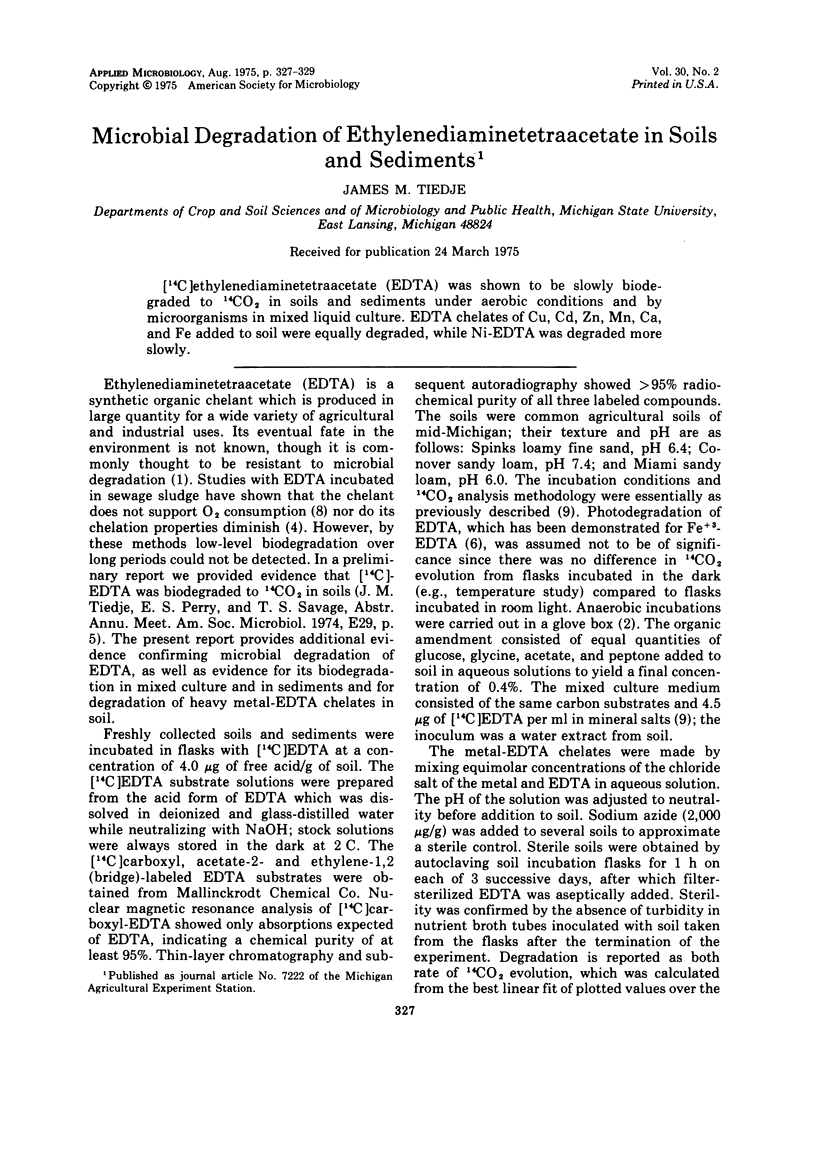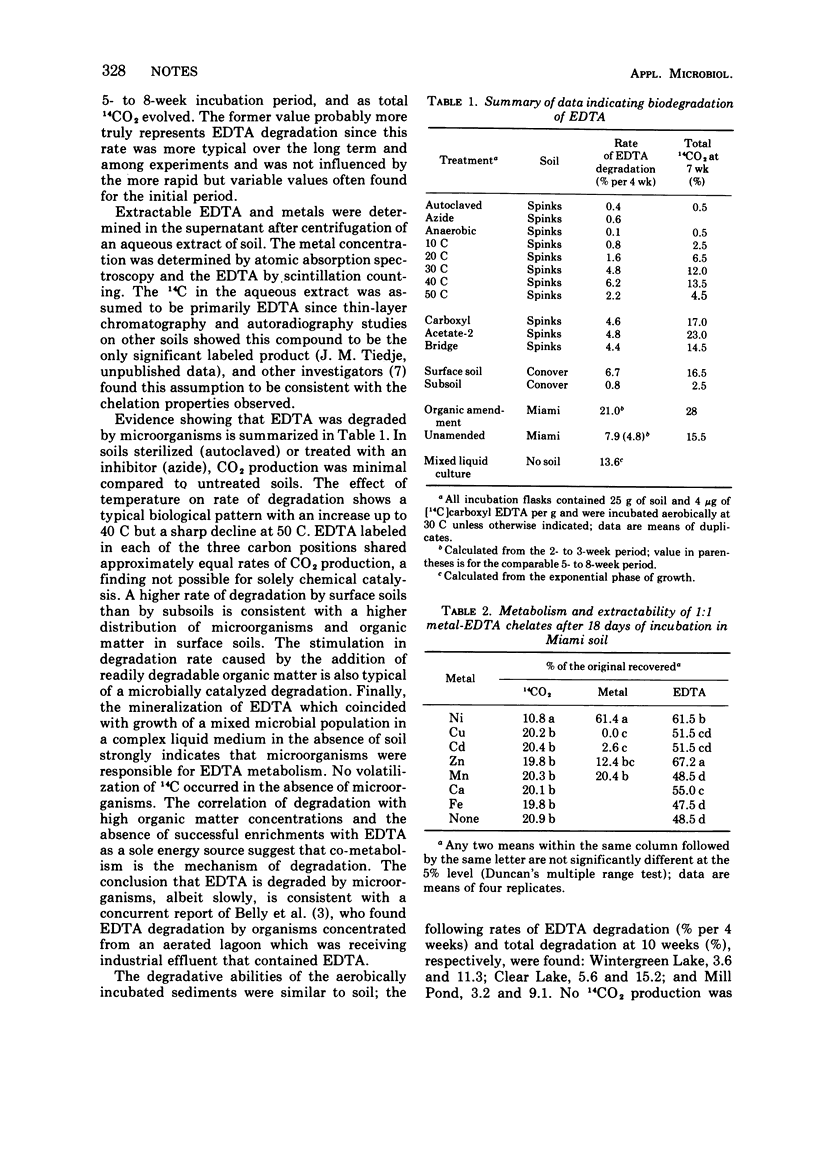Abstract
[14C]ethylenediaminetetraacetate (EDTA) was shown to be slowly biodegraded to 14CO2 in soils and sediments under aerobic conditions and by microorganisms in mixed liquid culture. EDTA chelates of Cu, Cd, Zn, Mn, Ca, and Fe added to soil were equally degraded, while Ni-EDTA was degraded more slowly.
Full text
PDF


Selected References
These references are in PubMed. This may not be the complete list of references from this article.
- Arank A., Syed S. A., Kenney E. B., Freter R. Isolation of anaerobic bacteria from human gingiva and mouse cecum by means of a simplified glove box procedure. Appl Microbiol. 1969 Apr;17(4):568–576. doi: 10.1128/am.17.4.568-576.1969. [DOI] [PMC free article] [PubMed] [Google Scholar]
- Belly R. T., Lauff J. J., Goodhue C. T. Degradation of ethylenediaminetetraacetic acid by mictobial populations from an aerated lagoon. Appl Microbiol. 1975 Jun;29(6):787–794. doi: 10.1128/am.29.6.787-794.1975. [DOI] [PMC free article] [PubMed] [Google Scholar]
- Firestone M. K., Tiedje J. M. Biodegradation of metal-nitrilotriacetate complexes by a Pseudomonas species: mechanism of reaction. Appl Microbiol. 1975 Jun;29(6):758–764. doi: 10.1128/am.29.6.758-764.1975. [DOI] [PMC free article] [PubMed] [Google Scholar]
- Potos C. Effects of EDTA on wastewater treatment. J Water Pollut Control Fed. 1965 Sep;37(9):1247–1255. [PubMed] [Google Scholar]


